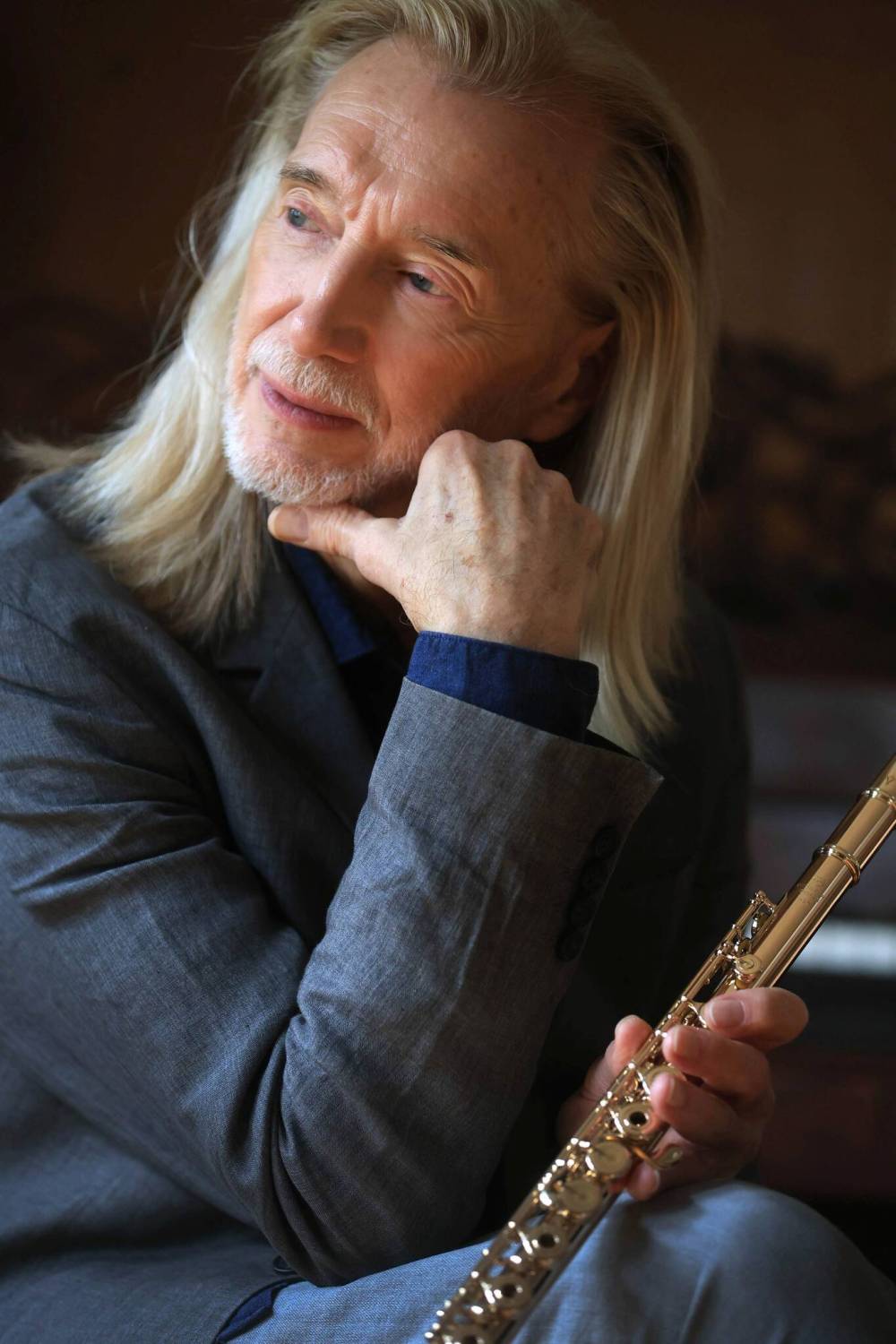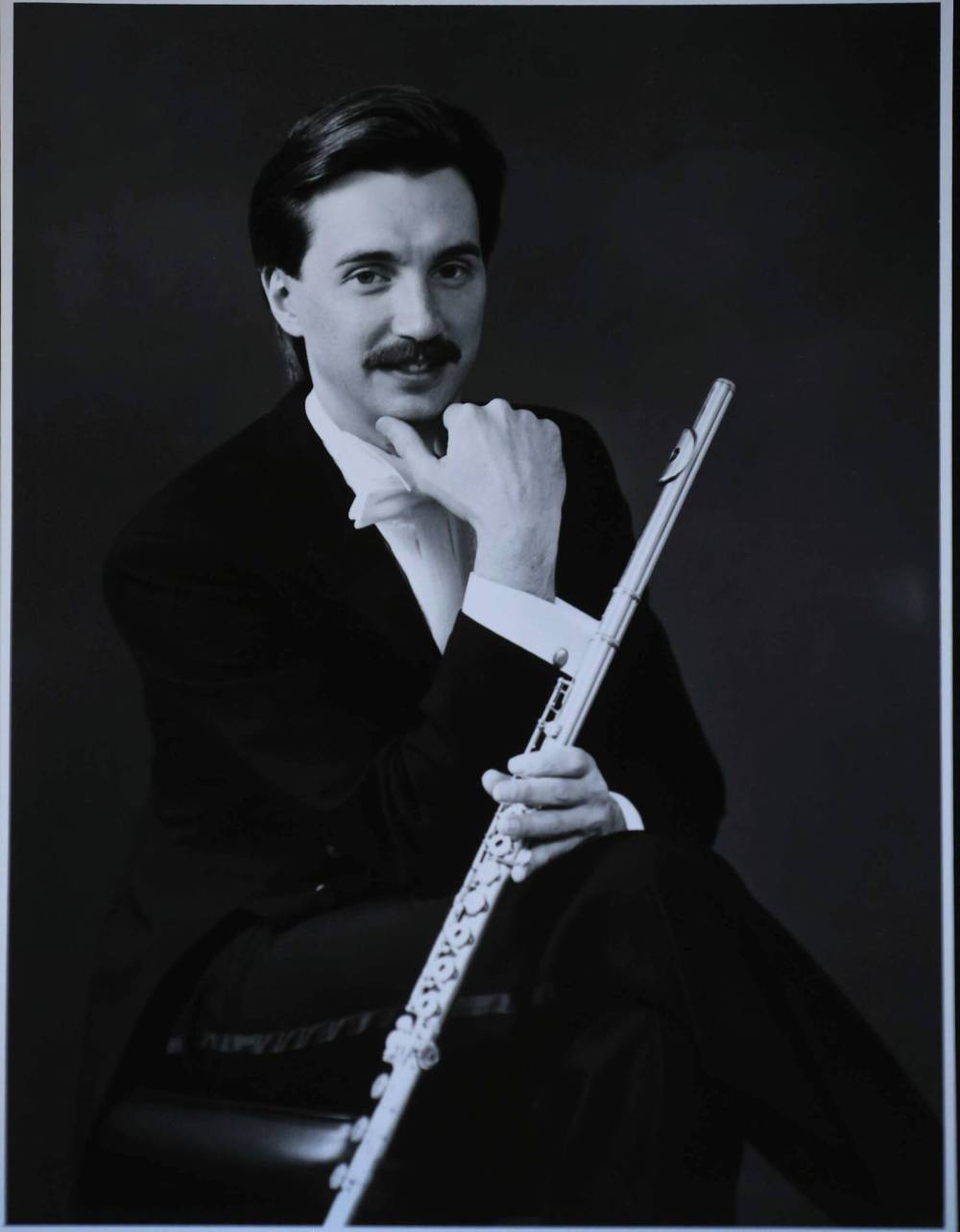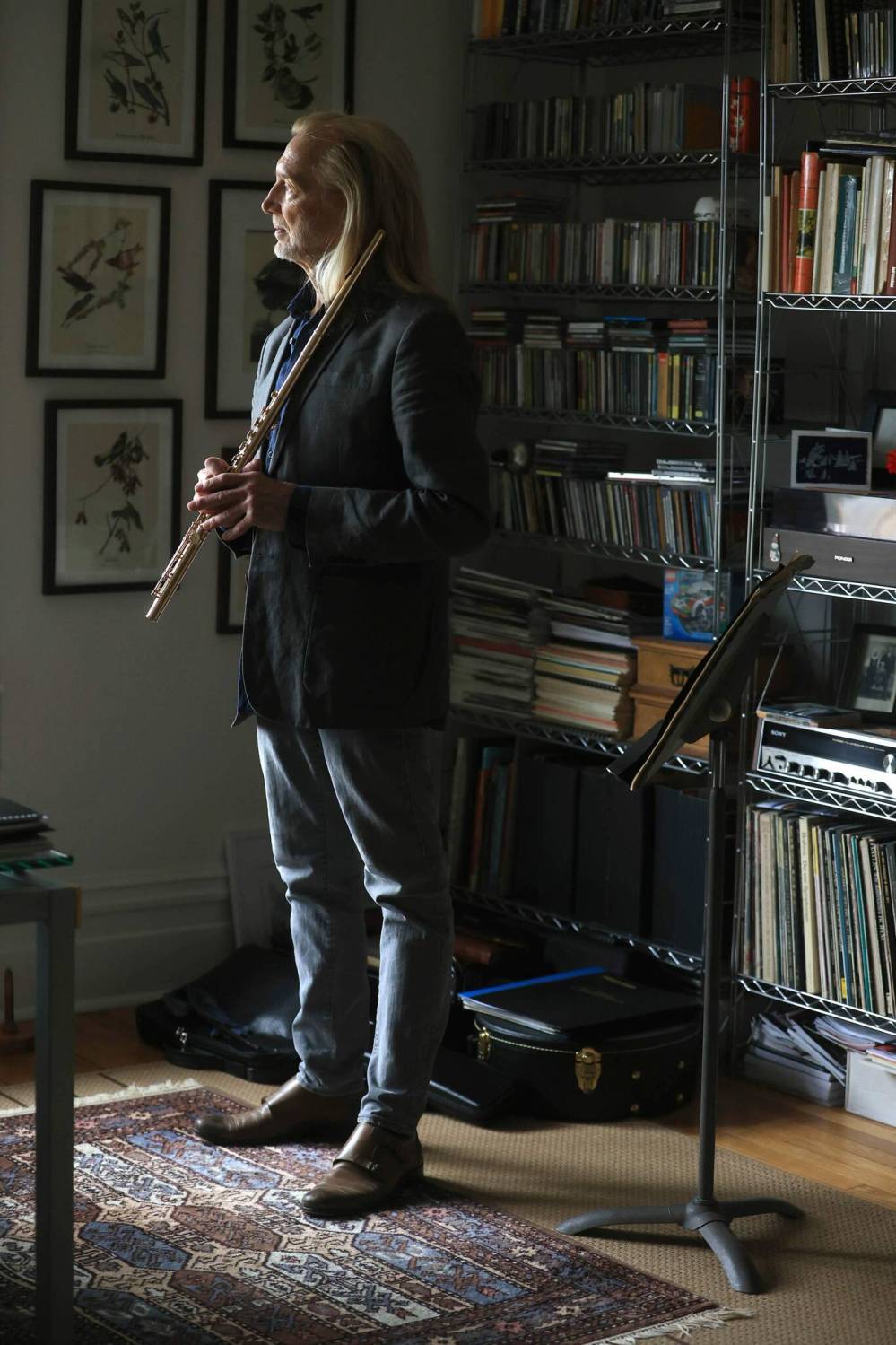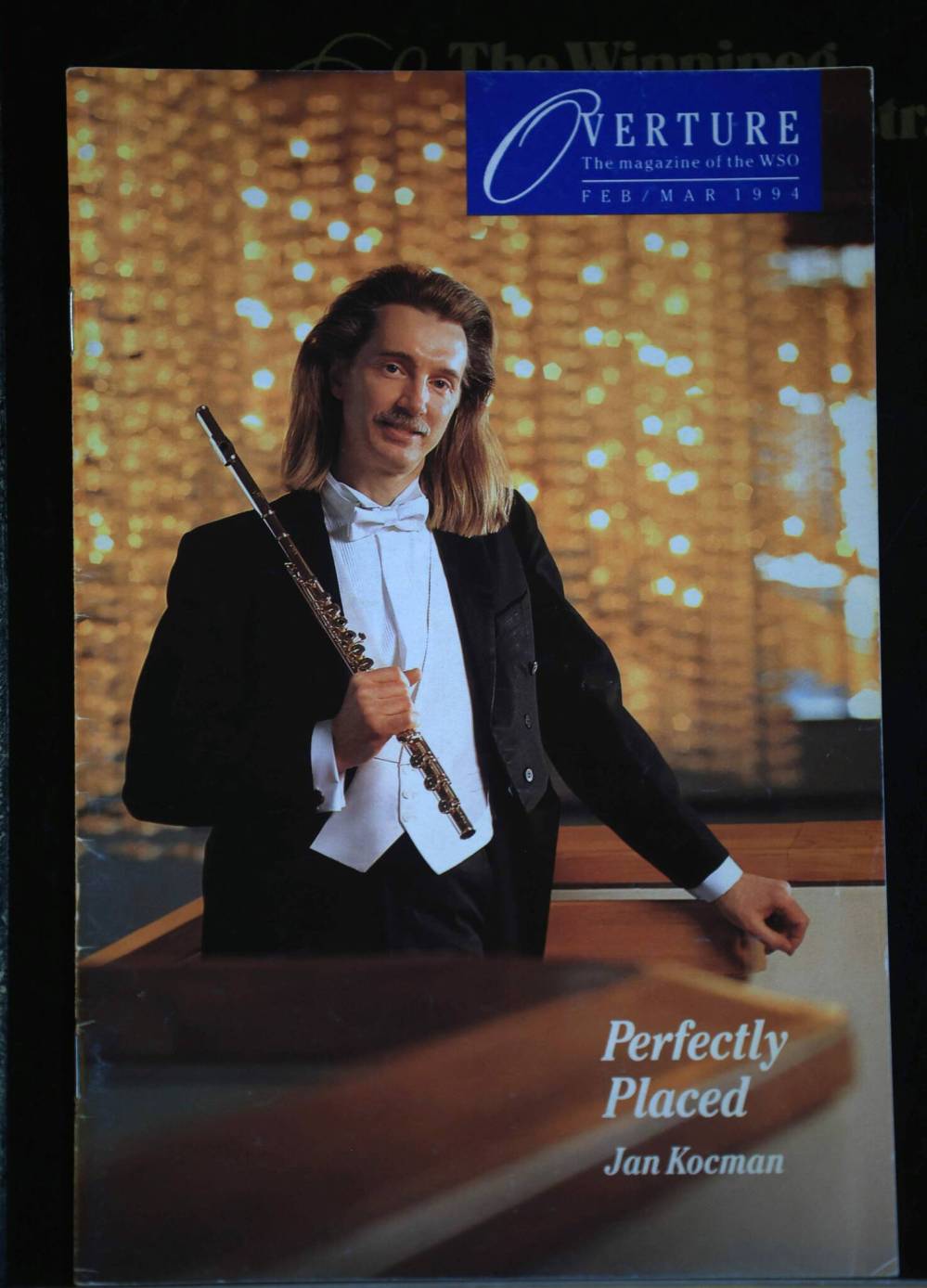Air time Principal flutist Jan Kocman celebrates a half-century with Winnipeg Symphony Orchestra
Read this article for free:
or
Already have an account? Log in here »
To continue reading, please subscribe:
Monthly Digital Subscription
$1 per week for 24 weeks*
- Enjoy unlimited reading on winnipegfreepress.com
- Read the E-Edition, our digital replica newspaper
- Access News Break, our award-winning app
- Play interactive puzzles
*Billed as $4.00 plus GST every four weeks. After 24 weeks, price increases to the regular rate of $19.00 plus GST every four weeks. Offer available to new and qualified returning subscribers only. Cancel any time.
Monthly Digital Subscription
$4.75/week*
- Enjoy unlimited reading on winnipegfreepress.com
- Read the E-Edition, our digital replica newspaper
- Access News Break, our award-winning app
- Play interactive puzzles
*Billed as $19 plus GST every four weeks. Cancel any time.
To continue reading, please subscribe:
Add Free Press access to your Brandon Sun subscription for only an additional
$1 for the first 4 weeks*
*Your next subscription payment will increase by $1.00 and you will be charged $16.99 plus GST for four weeks. After four weeks, your payment will increase to $23.99 plus GST every four weeks.
Read unlimited articles for free today:
or
Already have an account? Log in here »
Hey there, time traveller!
This article was published 22/11/2024 (326 days ago), so information in it may no longer be current.
As the longest serving principal musician in the history of the Winnipeg Symphony Orchestra, one might think getting butterflies ahead of a public performance would be a thing of the past for Jan Kocman.
Think again, says the WSO’s principal flutist, who joined the 77-year-old ensemble in the fall of 1974, back when All in the Family was the most-watched show on television, Chinatown was No. 1 at the box office and Paul Anka’s (You’re) Having My Baby was enjoying a three-week run at the top of the pop charts.
RUTH BONNEVILLE / FREE PRESS Winnipeg Symphony Orchestra principal flutist Jan Kocman, 74, is marking five decades with the ensemble.
“Sometimes you can go along for a while, convincing yourself that you no longer get nervous, then it’s a few days later and you can’t believe how anxious or tense you’re feeling,” Kocman says, seated in a Corydon Avenue café, where he is casually dressed in a black leather jacket, jeans and a dark T-shirt.
Last month, for example, the 67-member symphony accompanied a pre-Halloween screening of The Phantom of the Opera, the silent film from 1925 starring Lon Chaney in the title role. It had been decades since Kocman, recognizable for his shoulder-length, blonde locks, had seen the movie in its entirety.
In the period leading up to the concert, he was surprised to discover just how demanding the film score was.
“Some of the woodwind parts are extremely difficult, particularly for the flute,” he says, pausing to take a sip of his latté. “So to answer your question, yes, there were a few butterflies that evening, but to me, that’s always a good thing.
“As a musician you constantly want to be challenged, even when you’ve been at it for (here he widens his eyes as if to say ‘where does the time go?’) 50 years.”
Kocman, 74, was born and raised in Hammond, Ind., a city of 80,000 tucked into the northwestern-most corner of the state. His father Frank was a talented musician who played flute and clarinet for an American armed services band stationed in the South Pacific during the Second World War.
The elder Kocman introduced his son to the clarinet at age seven and while Jan picked up the instrument quickly, he was forced to switch over to the flute by his eighth birthday, owing to the fact he’d lost his two front teeth and could no longer bite down on the clarinet’s mouthpiece.
Kocman (shown in the 1980s) still at times gets pre-show jitters, which he sees as a good thing.
Frank, a jack-of-all-trades who worked in a candy factory, was also a member of a semi-professional orchestra based in Chicago.
And because their family lived close to the Windy City — Hammond is basically a suburb of South Chicago, Kocman explains — his father would take him and his two siblings to hear the Chicago Symphony Orchestra almost every time a noteworthy flute concerto was part of the proceedings.
After graduating from Hammond High School, where he played flute for the school band, Kocman enrolled at Indiana University’s School of Music in Bloomington. He completed a five-year bachelor of music education program before attaining a master’s degree in flute performance, studying under James Pellerite, the former principal flutist of the Philadelphia Orchestra and a Lifetime Achievement Award-recipient from the U.S. National Flute Association.
In 1973, during Kocman’s second-last year at university, the Winnipeg Symphony Orchestra’s then-conductor Piero Gamba was in Cleveland for a week, hosting auditions for a vacant principal flutist position.
Kocman was somewhat familiar with the Canadian orchestra — one of his instructors, Walter Kaufmann, had been the WSO’s music director from 1948-56 — so he made the 600-kilometre trip to Ohio, where he “played well, but apparently not quite well enough.”
As it turned out, the person Gamba settled on proved to be less than an ideal fit, which resulted in the position being bulletined again the following year.
Only that time, interested parties would have to make their way to Manitoba’s capital if they wished to try out.
“Let’s just say principal flutist jobs are very few and far between, so to me it was a no-brainer to catch a flight from Indianapolis to Winnipeg,” Kocman says, noting he could pick Winnipeg out on a map, but that would have been the extent of his knowledge of the city when he entered the Centennial Concert Hall’s Rehearsal Room 1 in April 1974, to play for Gamba for the second time in 12 months.
Kocman remembers kicking things off with one of his favourite pieces, the Nielsen Flute Concerto, written in 1926 by Danish composer Carl Nielsen.
Gamba, along with then-concertmaster Arthur Polson, thanked him very much, then directed him to a pedestal holding music sheets for a series of excerpts they wanted him to perform next.
That’s OK, Maestro, came Kocman’s response. Simply tell him what they wished to hear, and he would be happy to comply, from memory.
“The first piece they asked for was a flute solo from the fourth movement of Brahms’ Symphony No. 4 and I was like ‘no problem,’” he says, breaking into a grin.
Next came the opening solo from Claude Dubussy’s Prelude to the Afternoon of a Faun. He nailed that, too, as well as a section from Maurice Ravel’s Daphnis et Chloé.
“It wasn’t until they asked me to do The Sorcerer’s Apprentice by (Paul) Dukas that I said, sure, except I was going to need the music for that one,” he continues. “They nodded and said, ‘of course, it’s right there in front of you.’”
“.. we have an amazing orchestra that stands head-to-head with some of the really great orchestras of the world” – Jan Kocman
Three months later — by which time he had returned to Hammond — he received a call from Leonard Stone, the WSO’s executive director, letting him know he was Gamba’s pick.
Also, how soon could he get to the Canadian consulate in Chicago, to get his papers in order?
Kocman arrived in Winnipeg in September 1974. He was pleased to learn that besides its own 32-week season, the orchestra was also tapped to accompany the Royal Winnipeg Ballet and the Manitoba Opera, as well as take part in weekly recording sessions at a CBC-owned studio in St. Boniface.
RUTH BONNEVILLE / FREE PRESS Jan Kocman joined the WSO in 1974 as principal flutist, and he has been with the symphony ever since. Kocman is the longest serving principal musician in the history of the symphony.
At the conclusion of his first year he was offered a second contract, which he gratefully accepted, he says. For the first three years, he spent the summers in Massachusetts, teaching at a music festival, before moving here full-time in 1976.
Kocman, who went on to become a Canadian citizen, also taught flute one-on-one at the University of Manitoba for almost 40 years.
He is proud to report that two of his former students are currently members of the Calgary Philharmonic Orchestra, and that two others play with the WSO, whenever their services are required.
Fifty years in, Kocman, who cites a 2013 WSO concert at New York City’s Carnegie Hall as a career highlight, still gets as excited as a season-ticket holder every time a new season is announced.
“Not only for the symphony, but I want to know what’s going on with the ballet… what the opera is up to.
“Last month (the Manitoba Opera) was doing Donizetti’s The Elixir of Love, which I have always enjoyed playing,” he says, mentioning his eye-catching, instrument-of-choice boasts 14-karat gold keys and was built in 1950 by the late Verne Q. Powell, whose customers included Ian Anderson of British rock band Jethro Tull.
Coincidentally, in a 2011 review, the Free Press’s Gwenda Nemerofsky wrote “Who knew principal flute Jan Kocman was such a rocker?” in regard to his take on Jethro Tull’s Living in the Past, which was part of a classic rock program the WSO staged over a pair of nights.
Through the years, Kocman, who has also been a guest musician with orchestras in Vancouver and Minneapolis, has had counterparts from the United States and abroad openly wonder why on earth he chose to remain in Winnipeg for his entire career. He has always been quick to defend his decision.
“Sure, we don’t have the size of Chicago or Montreal, which can easily carry 100 people, but I truly believe we have an amazing orchestra that stands head-to-head with some of the really great orchestras of the world,” he says, listing Gustav Mahler and Anton Bruckner as composers who wrote “fantastically” for the flute.
“I’ve heard people refer to Winnipeg as a stepping stone, which for some people perhaps it was. But having been a part of it for 50 years, it’s much more than that. For me, things couldn’t have worked out any better.”
david.sanderson@freepress.mb.ca
Dave Sanderson was born in Regina but please, don’t hold that against him.
Our newsroom depends on a growing audience of readers to power our journalism. If you are not a paid reader, please consider becoming a subscriber.
Our newsroom depends on its audience of readers to power our journalism. Thank you for your support.

